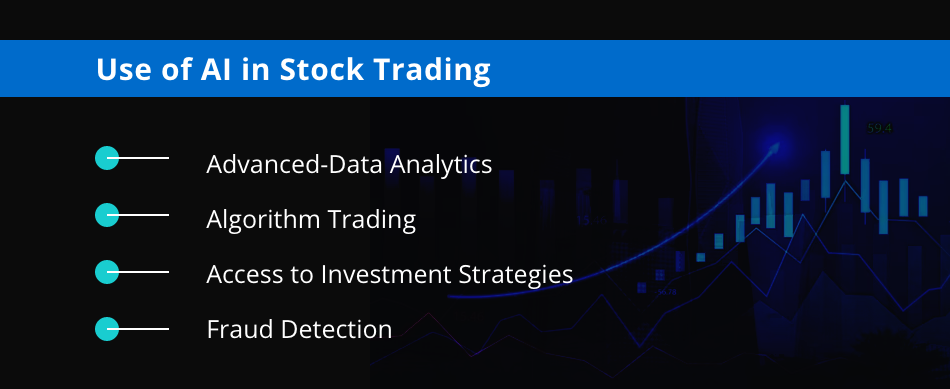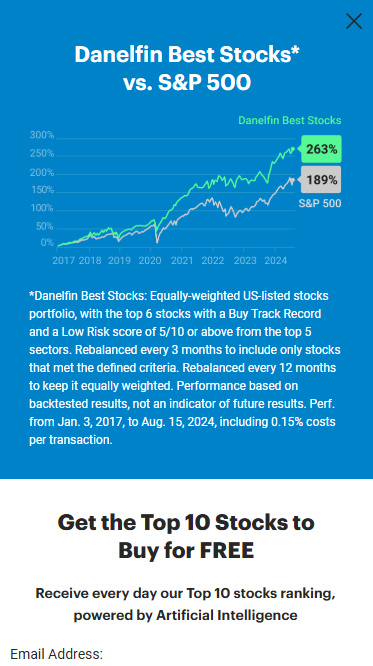The User Interface (UI), and the User Experience (UX) in AI trading platforms that predict/analyze prices of stocks play a vital part in ensuring efficiency and satisfaction. Even even if AI models are robust but a poorly designed interface can hinder decision-making. These are the top 10 suggestions for assessing the UI/UX of these platforms:
1. Check the user-friendliness as well as the intuitiveness, simplicity and ease of use.
Navigation The platform should be easy to use by clearly defining menus, buttons and workflows.
Learning curve: Determine how fast an individual can learn and use a system without extensive instruction.
Look for similar design styles (e.g. color scheme and button styles) across all platforms.
2. Check Customizability
Dashboard customization: Check whether dashboards are customizable to display charts, data and other metrics that are relevant to the user.
Layout flexibility: Make sure that the platform permits users to the ability to rearrange or resize widgets and charts.
Themes and Preferences: Verify whether the platform supports dark and light modes, or other visual preferences.
3. Visualize Data
Quality of the chart: Make sure that the platform is high-quality and offers interactive charts (e.g., candlestick charts, line charts) with zoom and pan functions.
Visual clarity - Examine to determine if the data are clearly displayed, using the appropriate labels, legends, or tooltips.
Real-time updates: Check if the visualizations are being updated in real-time, to reflect changes on the market.
4. Test Responsiveness and Speed
When working with huge data sets and complex calculations, the platform must be loaded quickly.
Real-time Performance: Determine whether the platform is able to handle data feeds with no delay.
Cross-device compatability: Check to determine if your device works across every device (desktops and mobiles, as well as tablets).
5. Assess accessibility
Go through the mobile app to determine if it has all the features you require to conduct business on the move.
Keyboard Shortcuts: Check that your platform allows keyboard shortcuts.
Accessibility features - Verify that the platform is compliant with accessibility standards.
6. You can search and filter your results.
Search efficiency: Ensure that the platform is able to let users quickly look up indexes, stocks or other assets.
Advanced filters: Find out the existence of filters that you can apply to the results.
Searches saved to your account - Check that the platform allows you to save frequently-used search filters or searches.
7. Look for Alerts or Notifications
Alarms that can be customized: Make sure users can set up notifications for specific situations.
Notification delivery: Verify that notifications are delivered via multiple channels, e.g. SMS, emails, or in-app notifications.
Timeliness - Check that alerts are generated quickly and accurately.
8. Connect to other tools
Broker integration - Ensure that your platform is seamlessly integrated with your brokerage in order to allow the quick execution of trades.
API access - Check to see whether APIs are available to advanced users who want to create customized workflows or tools.
Third-party integrations: Check whether the platform is compatible with other software (e.g., Excel, Google Sheets, trading bots).
9. Review Help and Support Features
Go through the onboarding videos.
Help center: Ensure the platform has a comprehensive help center or knowledge base.
Customer service: Check to see if the platform provides prompt customer service.
10. Test Overall Customer Satisfaction
User feedback: Utilize reviews and testimonials of users to gauge their overall satisfaction with the platform's UI/UX.
Free trial period: Test the platform at no cost and evaluate its usability.
How does the platform handle errors and edge cases?
Bonus Tips:
Aesthetics Although functionality is important aesthetics are important, a pleasing design can enhance the overall experience for users.
Performance under stress: Ensure that your platform is stable and responsive during times of market volatility.
Visit the forums and community to find out if there's a user group where users can discuss tips and provide feedback.
With these suggestions, you can effectively assess the user interface and experience of AI stock Predicting/Analyzing trading platforms and make sure they're user-friendly, efficient, and aligned with your needs in trading. The UI/UX of a trading system can be a major factor in your ability to make educated trades and make the best choices. Read the top rated best AI stock info for site recommendations including ai investing platform, ai investing platform, best ai for trading, ai investment platform, AI stock trading, ai trading tools, options ai, best ai for trading, investment ai, market ai and more.

Top 10 Suggestions For Evaluating Ai Trading Platforms For Their Versatility And The Possibility Of Trial.
Analyzing the trial and flexibility options of AI-driven stock prediction and trading platforms is essential to make sure they are able to meet your needs before committing to a long-term subscription. Here are the top ten suggestions to think about these aspects.
1. Free Trial Availability
TIP: Ensure that the platform you're looking at provides a free trial of 30 days to test the features and capabilities.
The reason: A trial lets you test the platform with no taking on any financial risk.
2. The Trial Period as well as Limitations
Tip: Review the length of your trial and any limitations you may encounter (e.g. limited features, access to data).
The reason: Knowing the limitations of a trial can help you determine if an exhaustive assessment is offered.
3. No-Credit-Card Trials
There are free trials available by searching for ones that don't require you to provide the details of your credit card.
Why: This reduces any chance of unexpected costs and makes deciding to cancel more simple.
4. Flexible Subscription Plans
TIP: Check if the platform offers different subscription options (e.g., monthly, quarterly, annual) with clear pricing and tiers.
Why: Flexible plans allow you to choose the level of commitment that's best suited to your budget and requirements.
5. Customizable features
TIP: Make sure the platform permits customization of features, such as alerts, risk levels, or trading strategies.
The reason: Customization allows the platform to meet your trading objectives.
6. Simple Cancellation
Tips: Consider how simple it is to downgrade or cancel the subscription.
The reason: By allowing you to leave without hassle, you'll be able to avoid getting stuck in an arrangement that's not suitable for you.
7. Money-Back Guarantee
Check out platforms that offer 30 days of money-back guarantees.
The reason: You get an extra security net in case you aren't happy with the platform.
8. Access to all features during trial
TIP: Make sure that the trial gives you access to all features, not just a limited version.
Why? Testing the complete features can help you make an informed decision.
9. Support for customers during trial
Tips: Assess the level of support provided by the company during the trial.
You will be able to maximize the trial experience if you have reliable assistance.
10. Post-Trial Feedback System
Check to see the feedback received during the trial in order to improve the service.
What's the reason? A platform that relies on user feedback is bound to evolve quicker and better serve the needs of users.
Bonus Tip Tips for Scalability Options
Make sure that the platform you select can grow with your trading needs. It should have more advanced plans or features as your activities increase.
Before you make any financial commitment, carefully evaluate these trial and flexibility options to determine if AI stock trading platforms and predictions are the right choice for your needs. Check out the best best ai trading platform for blog info including best AI stocks to buy now, how to use ai for stock trading, AI stock trader, AI stock prediction, AI stock predictions, ai trading tool, best ai for stock trading, ai trading tool, chart analysis ai, AI stock investing and more.
